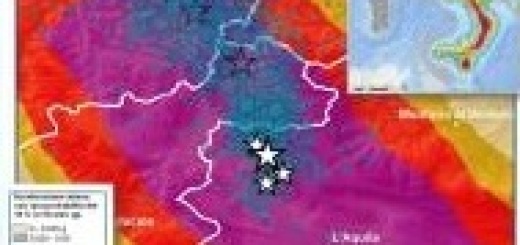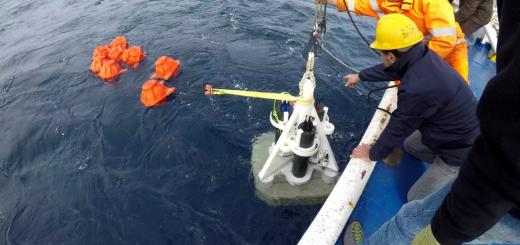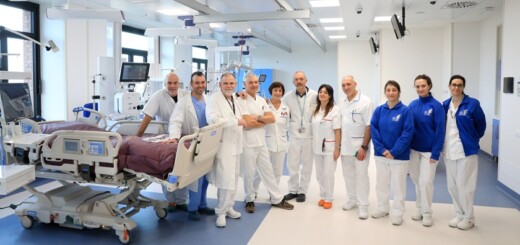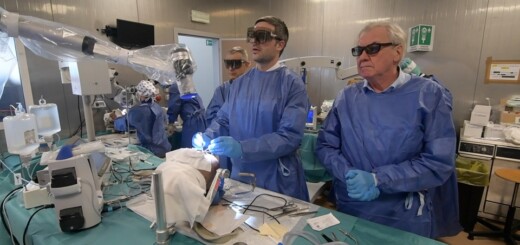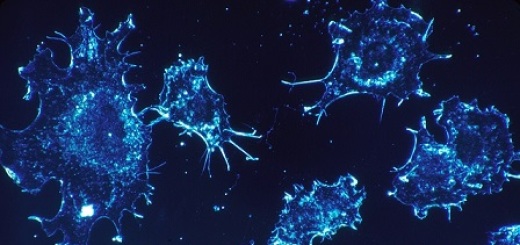
Durante gli anni di sperimentazione, il Centro per il Monitoraggio delle attività di Sottosuolo dell’INGV non ha evidenziato correlazioni tra la sismicità e le deformazioni del suolo con le attività di sfruttamento del sottosuolo nella Val d’Agri in Basilicata

Roma, 3 gennaio 2023 – Si è appena concluso il periodo triennale di sperimentazione per il monitoraggio della sismicità, delle deformazioni del suolo e delle pressioni di poro nell’ambito delle attività di produzione di idrocarburi in Val d’Agri (Basilicata) richiesto nel 2017 dal Ministero per lo Sviluppo Economico (MiSE) all’Istituto Nazionale di Geofisica e Vulcanologia (INGV).
Dai dati e dalle elaborazioni acquisite in questo periodo di osservazione, i ricercatori dell’INGV possono affermare che la sismicità localizzata nell’area di studio della Val d’Agri ha mantenuto le stesse caratteristiche coerenti degli anni precedenti. Inoltre, per le deformazioni del suolo, le misure geodetiche di alta precisione condotte confermano che il campo locale di velocità è generalmente coerente con il campo regionale, rappresentando innanzitutto la distensione tettonica appenninica in atto.
Su proposta del MiSE (competenza ora del Ministero dell’Ambiente e della Sicurezza Energetica – MASE) la Val D’Agri costituisce uno dei quattro siti pilota per la sperimentazione degli Indirizzi e Linee Guida (ILG) per il monitoraggio della sismicità, delle deformazioni del suolo e delle pressioni di poro nelle aree interessate da attività antropiche.
Gli ILG, infatti, definiscono e regolano le modalità di monitoraggio delle pressioni di poro, della sismicità e della deformazione del suolo nelle aree di sfruttamento di georisorse, stabilendo ruoli e responsabilità tra soggetti pubblici e privati coinvolti nell’attività industriale, a garanzia e tutela della sicurezza.
Nel sottosuolo della Basilicata, sono presenti i giacimenti continentali di petrolio con gas associato più estesi d’Europa, oggetto di estrazione di idrocarburi da parte di ENI da oltre 30 anni e, più recentemente, anche di TOTAL.
Nel 2017 l’INGV è stato nominato dal MiSE quale “Struttura Preposta al Monitoraggio” (SPM) per l’applicazione in Val d’Agri delle prescrizioni e delle raccomandazioni definite negli ILG. L’Istituto ha di seguito costituito il Centro per il Monitoraggio delle attività di Sottosuolo (CMS), una struttura interna dedicata alla raccolta, analisi, interpretazione e modellazione dei dati di monitoraggio relativi alle aree del territorio nazionale interessate da attività antropiche di sfruttamento di georisorse (quali estrazione di idrocarburi, reiniezione di acque di scarto, stoccaggio di gas naturale, geotermia, sequestrazione di anidride carbonica, estrazioni minerarie, invasi idrici).
La Val d’Agri si trova in una delle aree di maggiore pericolosità sismica in Italia. Nel dicembre 1857 un terremoto di magnitudo stimata M~7, uno dei terremoti più forti della storia dell’Italia, ha colpito la Val d’Agri e il Vallo di Diano. Pertanto, l’alta pericolosità sismica presente in Basilicata, sovrapposta all’alto interesse di sfruttamento industriale dei suoi giacimenti di idrocarburi, ha motivato la scelta di dotare la Val d’Agri di un sistema di monitoraggio geofisico che può essere considerato tra i più avanzati d’Italia.
“Nel caso della Val d’Agri l’attività industriale consiste sia nell’estrazione di petrolio con gas associato, sia nella re-iniezione delle acque di strato che arrivano in superficie durante il processo di produzione – spiega Thomas Braun, sismologo del CMS dell’INGV – Questo territorio è considerato tra le aree con la più alta pericolosità sismica in Italia. L’alto rischio sismico presente in Basilicata, unitamente all’alto interesse di sfruttamento industriale dei suoi giacimenti di idrocarburi, ha indotto quindi a dotare la Val d’Agri di un sistema di monitoraggio geofisico tra i più avanzati del Paese”.
“Il compito del Centro di monitoraggio dell’INGV consiste nel controllo giornaliero dei parametri di monitoraggio della sismicità: dal controllo manuale della sismicità al calcolo della magnitudo, all’aggiornamento del database e alla compilazione e pubblicazione del bollettino – spiega Andrea Morelli, responsabile del CMS – Nel caso in cui all’interno del dominio di riferimento si verifichi un evento sismico con Magnitudo M ≥ 1.5 viene stabilito il primo livello di allerta del sistema a semaforo. Le attività successive sono indicate esattamente negli ILG e comprendono tutta una serie di azioni di sicurezza fino alla eventuale sospensione delle attività di produzione/re-iniezione/stoccaggio in corso, nel caso di superamento di soglie crescenti”, conclude Andrea Morelli.
Il sistema di monitoraggio installato in Val d’Agri consente l’acquisizione in tempo reale di dati provenienti da una rete sismica integrata di 57 stazioni (pubbliche e private) in grado di localizzare la microsismicità nonchè l’acquisizione periodica di dati geodetici di precisione da una rete locale di 5 stazioni permanenti integrate nel sistema di rete regionale.
Questi dati, raccolti e analizzati dal CMS dell’INGV, consentono di avere attivo in Basilicata un sistema di monitoraggio che fornisce un quadro costantemente aggiornato della sismicità e delle deformazioni legate alle attività umane e delle eventuali azioni da adottare in caso di superamento di soglie di allerta, , secondo uno schema progressivo “a semaforo”.
“Tra il 2020 e il 2022 la sismicità localizzata entro un raggio di 5 km dal pozzo di re-iniezione delle acque di strato, sito a Montemurro in provincia di Potenza, ha mantenuto valori di magnitudo ML < 1, ossia al di sotto della soglia limite di ML ≥ 1.5 a partire dalla quale si passa da un livello di gestione ordinaria 0 (verde) a un livello di allerta 1 (giallo) – spiega Stefania Danesi, sismologa del CMS – Inoltre, le misure geodetiche di precisione fin qui condotte, così come i dati di deformazione del suolo provenienti dalle reti GPS e InSAR (reti satellitari), non hanno evidenziato deformazioni del suolo indotte dalle attività di sfruttamento del sottosuolo nella zona”.
Le attività sono realizzate in un quadro di trasparenza e di condivisione delle informazioni. Un sito web dedicato (http://cms.ingv.it), raggiungibile anche dal portale nazionale dell’INGV, garantisce che siano pubblicate in massima trasparenza le informazioni generali e di dettaglio sulle attività di monitoraggio presso le singole concessioni.
Per i prossimi mesi è prevista un’ulteriore estensione della rete geodetica locale da 5 a 12 stazioni nei dominii di monitoraggio della Val d’Agri. La rete integrata sismica e geodetica consentirà di migliorare ulteriormente il livello di sorveglianza che, già ad oggi, costituisce un unicum in Italia per il monitoraggio dei parametri di sismicità e deformazione in aree di sfruttamento minerario.
Fig. 1 – Sorgente naturale Tramutola
*******
Val d’Agri, first results of seismicity monitoring connected to hydrocarbon production activities
During the years of experimentation, the INGV Monitoring Center for Subsoil Activities did not show any correlations between seismicity and ground deformations with subsoil exploitation activities in the Val d’Agri in Basilicata
Rome, January 3, 2023 – It just ended the three-year experimentation period for monitoring seismicity, ground deformations and pore pressures in the framework of hydrocarbon production activities in Val d’Agri (Basilicata), requested in 2017 by the Ministry for Economic Development (MiSE) at the National Institute of Geophysics and Volcanology (INGV).
Based on the data and elaborations acquired in this period of observation, the INGV researchers can state that the seismicity localized in the Val d’Agri study area has maintained the same coherent characteristics of the previous years. Furthermore, concerning ground deformations, the performed high-precision geodetic measurements confirm that the local velocity field is generally consistent with the regional field, representing mainly the Apennine tectonic extension in progress.
On a proposal of the MiSE (now the responsibility lies with the Ministry of the Environment and Energy Security – MASE) the Val D’Agri constitutes one of the four pilot sites for the experimentation of the Guidelines (ILG) for the monitoring of seismicity, ground deformation and pore pressures in areas affected by human activities.
The ILG, in fact, define and regulate the methods for monitoring pore pressures, seismicity and ground deformations in exploitation areas of georesources, establishing roles and responsibilities between public and private entities involved in the industrial activity, to ensure safety and protection
The subsoil of Basilicata hosts the largest continental reservoir of oil, with gas associated, in Europe, the subject of hydrocarbon extraction for more than 30 years by ENI and, more recently, also by TOTAL.
In 2017, INGV was charged by the MiSE as “monitoring agency” (SPM) responsible for the application in Val d’Agri of the regulations and recommendations defined in the ILG. Subsequently, the Institute established the Center for the Monitoring of Subsoil Activities (CMS), an internal structure dedicated to the collection, analysis, interpretation and modeling of monitoring data relating to areas of the national territory affected by anthropic activities of exploitation of georesources (such as hydrocarbon extraction, wastewater reinjection, natural gas storage, geothermal energy, carbon dioxide sequestration, mining, reservoir impoundments).
The Val d’Agri is located in one of the areas with the highest seismic hazard in Italy. In December 1857 an earthquake with an estimated magnitude M~7, one of the strongest earthquakes in the history of Italy, struck the Val d’Agri and the Vallo di Diano. Therefore, the high seismic hazard present in Basilicata, superimposed on the high interest in industrial exploitation of its hydrocarbon deposits, motivated the decision to equip the Val d’Agri with a geophysical monitoring system that can be considered among the most advanced of Italy.
“In the case of the Val d’Agri, the industrial activity consists in the extraction of oil with associated gas, and in the re-injection of the waste water that reaches the surface during the production process – explains Thomas Braun, seismologist at CMS of INGV – This territory is considered among the areas with the highest seismic hazard in Italy. The high seismic risk present in Basilicata, together with the great interest in the industrial exploitation of its hydrocarbon deposits, has therefore led to provide the Val d’Agri with one of the most advanced geophysical monitoring systems in the country”.
“The task of the INGV Monitoring Center consists in the daily control of the seismicity monitoring parameters: from the manual control of seismicity to the calculation of the magnitude, to updating the database and compiling and publishing the bulletin – explains Andrea Morelli, head of the CMS – In case that a seismic event with a magnitude M ≥ 1.5 occurs inside the reference domain, the first alert level of the traffic light system is triggered. The subsequent activities are indicated exactly in the ILG and include a series of safety actions up to the possible suspension of the production/re-injection/storage activities in progress, in the event of exceeding increasing thresholds”, concludes Andrea Morelli.
The monitoring system installed in Val d’Agri allows the real-time acquisition of data from an integrated seismic network of 57 stations (public and private) capable of locating microseismicity as well as the periodic acquisition of precision geodetic data from a local network of 5 permanent stations integrated in the regional network system.
These data, collected and analyzed by the INGV CMS, make it possible to have activated in Basilicata a monitoring system, which provides a constantly updated picture of the seismicity and deformations linked to human activities and any actions to be taken in the event of exceeding the alert threshold, according to a progressive “traffic light” pattern.
“Between 2020 and 2022 the seismicity located within a radius of 5 km from the waste water re-injection well, located near Montemurro in the province of Potenza, maintained magnitude values ML < 1, i.e., below the threshold of ML ≥ 1.5, above which one passes from an ordinary management level 0 (green) to alert level 1 (yellow) – explains Stefania Danesi, seismologist of the CMS – Furthermore, the precision geodetic measurements conducted so far, as well as the ground deformation data from GPS and InSAR networks (satellite networks), have not shown ground deformations induced by subsoil exploitation activities in the area”.
The activities are carried out in a framework of transparency and information sharing. A dedicated website (http://cms.ingv.it), which can also be reached from the national INGV portal, ensures that general and detailed information on monitoring activities at the individual concessions is published with maximum transparency.
A further extension of the local geodetic network from 5 to 12 stations in the monitoring domains of the Val d’Agri is planned for the coming months. The integrated seismic and geodetic network will make it possible to further improve the level of surveillance which, already today, is unique in Italy for the monitoring of seismicity and deformation parameters in areas of mining exploitation.
Fig. 1 – Natural hydrocarbon outcrop at Tramutola


